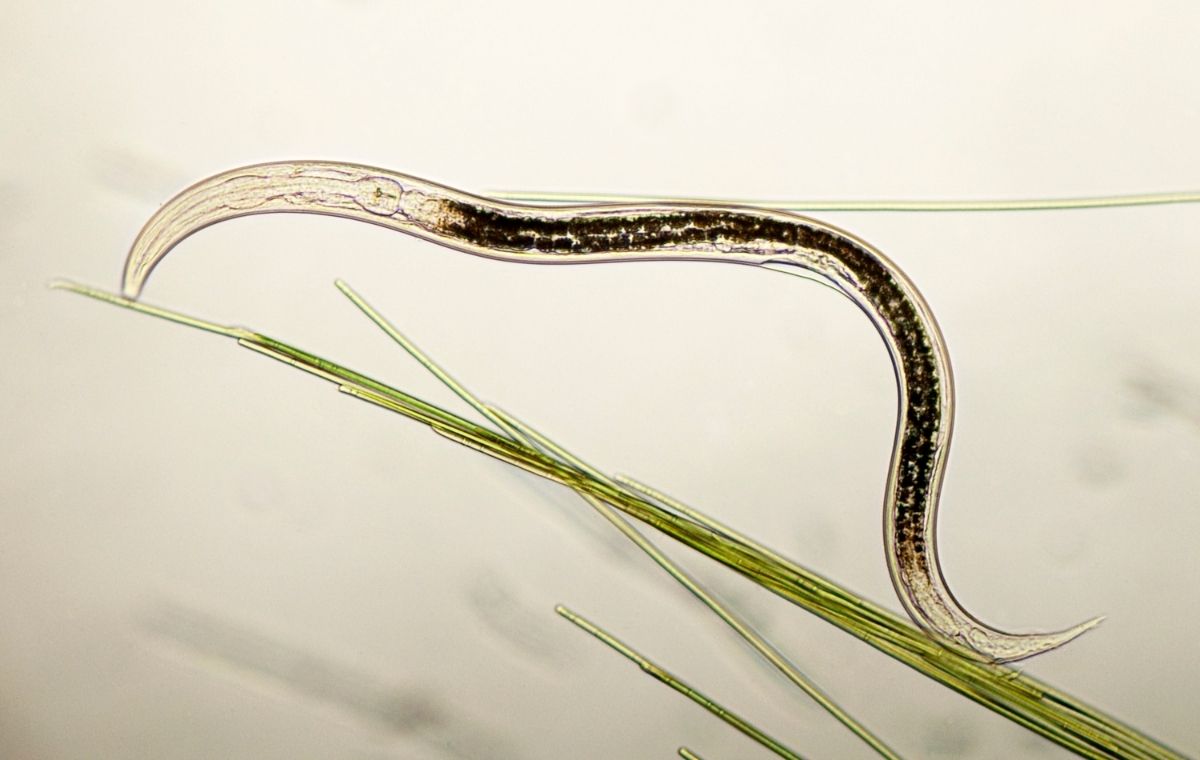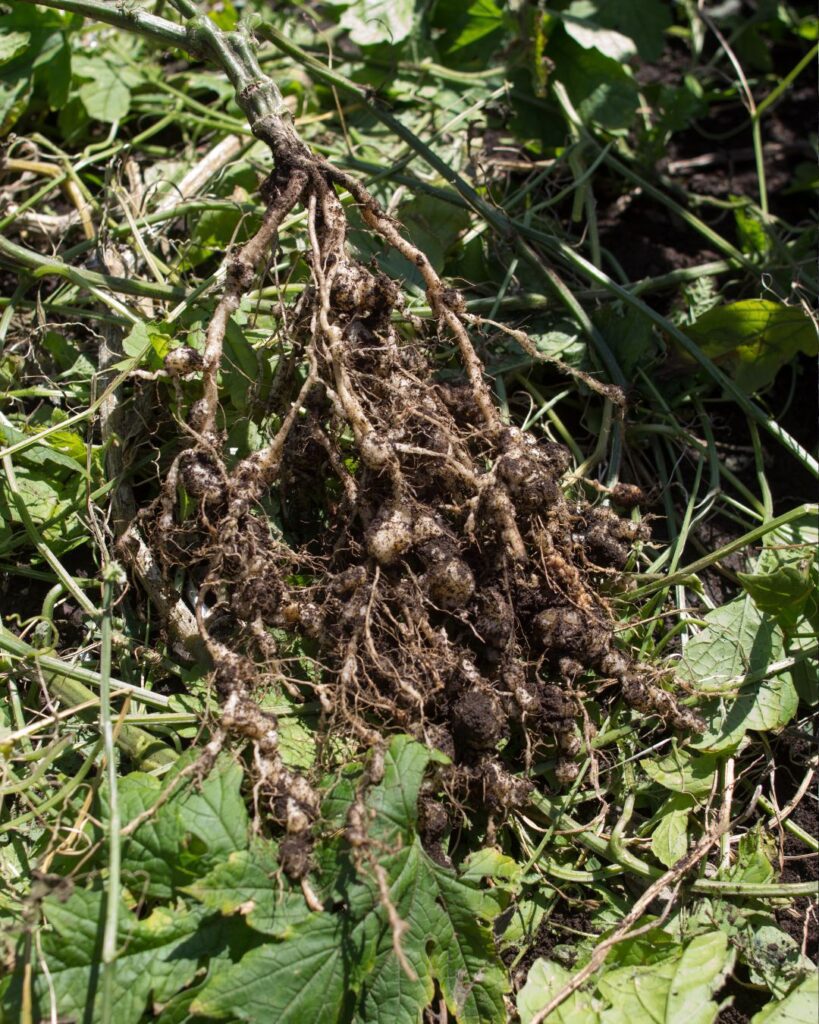Nematodes, also known as nematodes, are microscopic organisms belonging to the Phylum Nematoda. These beings live in a variety of ecosystems and are present in almost all regions of the world. They are incredibly versatile in their ways of life, being classified as free-living, saprophytes (feeding on remains of animals or plants), or parasites of animals and plants. In the human context, one of the best-known examples are roundworms, which are intestinal parasites.
The classification of the Phylum Nematoda reveals a remarkable diversity of species, with estimates ranging from 25,000 to half a million existing species. Nematodes are found in a wide range of habitats, from terrestrial to aquatic environments, including soils, freshwater, seas, and even in extreme environments such as deserts and polar regions. Within this phylum, species differentiation is notable, with significant variations in size, morphology, life cycle, and, more critically for gardening and agriculture, in relationships with host plants. Some genera, such as Meloidogyne and Pratylenchus, are known for their ability to parasitize plant roots, causing considerable damage. Other species, however, play vital ecological roles, such as decomposing organic matter, contributing to soil health. This diversity is a reminder that, although many nematodes are seen as pests, they are also essential and beneficial components of their ecosystems.
Understanding the life cycle of nematodes is fundamental for the effective management of these pests in ornamental plants. Generally, the cycle begins with eggs deposited in the soil or plant tissues. These eggs can be sensitive or quite resistant. They hatch to release larvae, which undergo several molts before reaching sexual maturity. Some species of nematodes have extremely rapid life cycles, being able to complete them in a few weeks, while others may take several months. Generally, the larval stage is crucial, as it is when nematodes are most active and damaging to plants, invading roots and disrupting the absorption of nutrients and water. Additionally, many nematodes form specialized structures, such as cysts or galls, which protect the eggs and larvae, increasing their resistance to adverse environmental conditions and control methods. Understanding these phases and their duration in each of the involved species helps professionals identify the best time for interventions.

In the realm of gardening and agriculture, plant-parasitic nematodes represent a significant threat. These organisms are commonly found in soil and plant roots, affecting economically important crops, such as soybeans, in various Brazilian states. Additionally, ornamental plants are also vulnerable to these pests, with significant impacts both in large-scale productions and in domestic gardens. Succulents, for example, show particular sensitivity to nematodes, often presenting nodules in the roots and scar-like striations on the stems. A study conducted by the Pernambuco Agricultural Research Company in 2004 highlighted that more than 40% of heliconias and 80% of musaceas in Pernambuco were infected by these parasites.
The damage caused by nematodes to plants is varied and can be devastating. They include the reduction of the overall development of the plant, necrosis in leaves and roots, formation of galls, poorly formed tubers and bulbs, as well as abnormal coloring in leaves and flowers. These impacts not only compromise the health and aesthetics of plants but also depreciate their economic value. For an accurate diagnosis, laboratory methods are essential. Soil and root analyses in specialized laboratories can identify the presence and density of nematodes. This usually involves extracting and observing nematodes from soil or plant tissues under a microscope. Additionally, molecular techniques such as PCR (Polymerase Chain Reaction) are increasingly used for quick and specific identification of the nematode species present, allowing for targeted and effective management. Careful observation of symptoms and laboratory confirmation are crucial for success in controlling these pests in ornamental plants.
Among the most common genera of plant-parasitic nematodes are Meloidogyne sp, Pratylenchus sp, Radopholus similis, and Aphelenchoides sp. Each of these genera has specific characteristics and can affect different types of plants. For example, Meloidogyne sp, known as the root-knot nematode, is notorious for causing galls on plant roots, significantly interfering with the absorption of nutrients and water.
Regarding mobility, nematodes do not move great distances on their own, usually moving only a few meters during their life cycle. However, they can be disseminated over long distances in various ways, such as through soil erosion by rainwater, the commercialization of contaminated substrates or plants, the improper disposal of contaminated substrates, and even the use of river sand in the production of substrates.
Phytoparasitic Nematodes are classified according to how they parasitize their hosts. Let’s explore these categories:
- Endoparasites: In this category, the adult fully penetrates the plant, where the eggs develop, and only juvenile forms emerge when the plant dies. They feed through structures called feeding syncytia. A notable example is the genus Meloidogyne.
- Semi-endoparasites: Here, the adult attaches deeply to the host plant, leaving part of its body exposed to the environment. Egg-laying occurs in the soil. Similar to endoparasites, they also feed through feeding syncytia. Examples include the genera Heterodera, Globodera, and Pratylenchus.
- Sedentary Ectoparasites: These nematodes introduce only their heads into the plant and typically remain in this position unless it’s for reproduction, at which point they can move. Egg-laying occurs directly in the soil. Paratylenchus and Ratylenchus are examples of genera in this category.
- Migratory Ectoparasites: They can be compared to free-living nematodes that feed on plants. These nematodes introduce only the stylet (mouthparts) into the plant, and some of them form feeding syncytia. Notable examples include the genera Xiphinema and Trichodorus.
In practical management of nematodes in gardens, prevention is key. Strategies such as the use of nematode-free substrates, the acquisition of healthy plants, and the destruction of infected plant remains are fundamental. The choice of species preferably resistant or tolerant to nematodes is a crucial initial step. For gardeners and landscapers, attention should be turned to the selection of species that demonstrate less susceptibility to these pests. In larger gardens, one can opt for the cultivation of antagonistic plants to nematodes, such as crotalaria, which has ornamental potential, and Tagetes sp, which in addition to being ornamental, release nematicidal substances into the substrate.
Additionally, practices such as crop rotation with non-host plants, such as grasses, can help reduce the nematode population in the soil. Another effective technique is soil solarization, which involves covering the soil with a clear plastic tarp during the hottest months, using solar energy to raise the soil temperature to levels lethal to nematodes. The use of organic fertilizers and composts can also be beneficial, as they improve soil structure and can help suppress nematode activity.
In nurseries where the control of nematodes is crucial to ensure the quality of plants, specific strategies must be adopted. A common practice is the use of sterilized or treated substrates to prevent the introduction of nematodes. This can include sterilizing the soil by thermal or chemical methods. Additionally, regular monitoring of seedlings and inspection of the root system during transplanting can help early identify the presence of nematodes. In cases of infestation, the use of specific nematicides may be necessary, but should be done judiciously to avoid damage to the environment and plants. Implementing a biological control program, using antagonistic organisms, such as fungi and bacteria that attack nematodes, can also be an effective approach. These practices, when combined with careful management and constant observation, can significantly help control nematodes in nurseries and ensure the production of healthy seedlings.
Other control measures include soil dehydration, as the lack of moisture interrupts the life cycle of the pest. Sun-drying the substrate is an effective technique in this regard. Additionally, in vegetable gardens and gardens, crop rotation (or species in flower beds) and the inclusion of fallow periods are beneficial practices in nematode management, as many plant species are resistant to these pests and can help interrupt their life cycle and reduce the nematode population in the soil.
Specifically regarding succulents, measures such as regular decapitation and substrate replacement can be crucial to save production plants. It is vital to properly dispose of contaminated material, burning plant remains and sterilizing the substrate. Still, it is recommended to avoid reusing substrates involved in the nursery.
In addition to these strategies, the development of resistant cultivars and the use of biological control, such as the introduction of natural predators of nematodes or the application of beneficial microorganisms that antagonize these pests, are approaches that have gained prominence. Biological control is particularly attractive as a sustainable alternative to chemical nematicides, which can have negative impacts on the environment and human health.
The use of nematicides is a common approach in controlling nematodes, especially in situations where infestation is severe and preventive measures are insufficient. Among the most used nematicides, products based on organophosphates, carbamates, and fumigants, such as metam-sodium, stand out. These compounds work in different ways, but generally act by interrupting vital processes of the nematodes or creating an inhospitable environment for them in the soil. However, it is crucial to use these products strictly following the manufacturer’s instructions and environmental regulations, due to potential risks to human health and the environment.
An important aspect of using nematicides is the strategy of alternating active ingredients. This practice involves alternating the use of nematicides with different modes of action to prevent the development of nematode resistance to a specific active ingredient. For example, one might alternate an organophosphate-based nematicide with a carbamate or a fumigant in different crop cycles. This alternation not only reduces selective pressure on the nematodes but also minimizes the environmental impact of the continuous use of a single type of chemical.
In summary, nematodes are small organisms, but they represent great challenges in the context of gardening and agriculture. Effective management of these pests requires an integrated approach, combining cultural practices, biological control, and, when necessary, the use of chemical agents responsibly and sustainably. With growing environmental concerns and the search for more sustainable agricultural practices, the study and management of nematodes will continue to be an important and relevant field of research in the future of gardening and agriculture.


